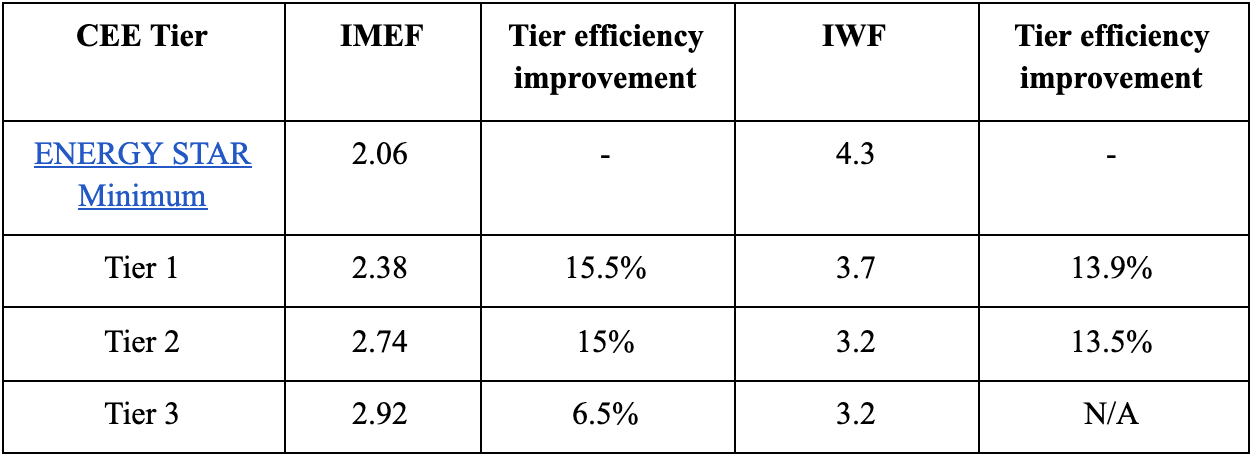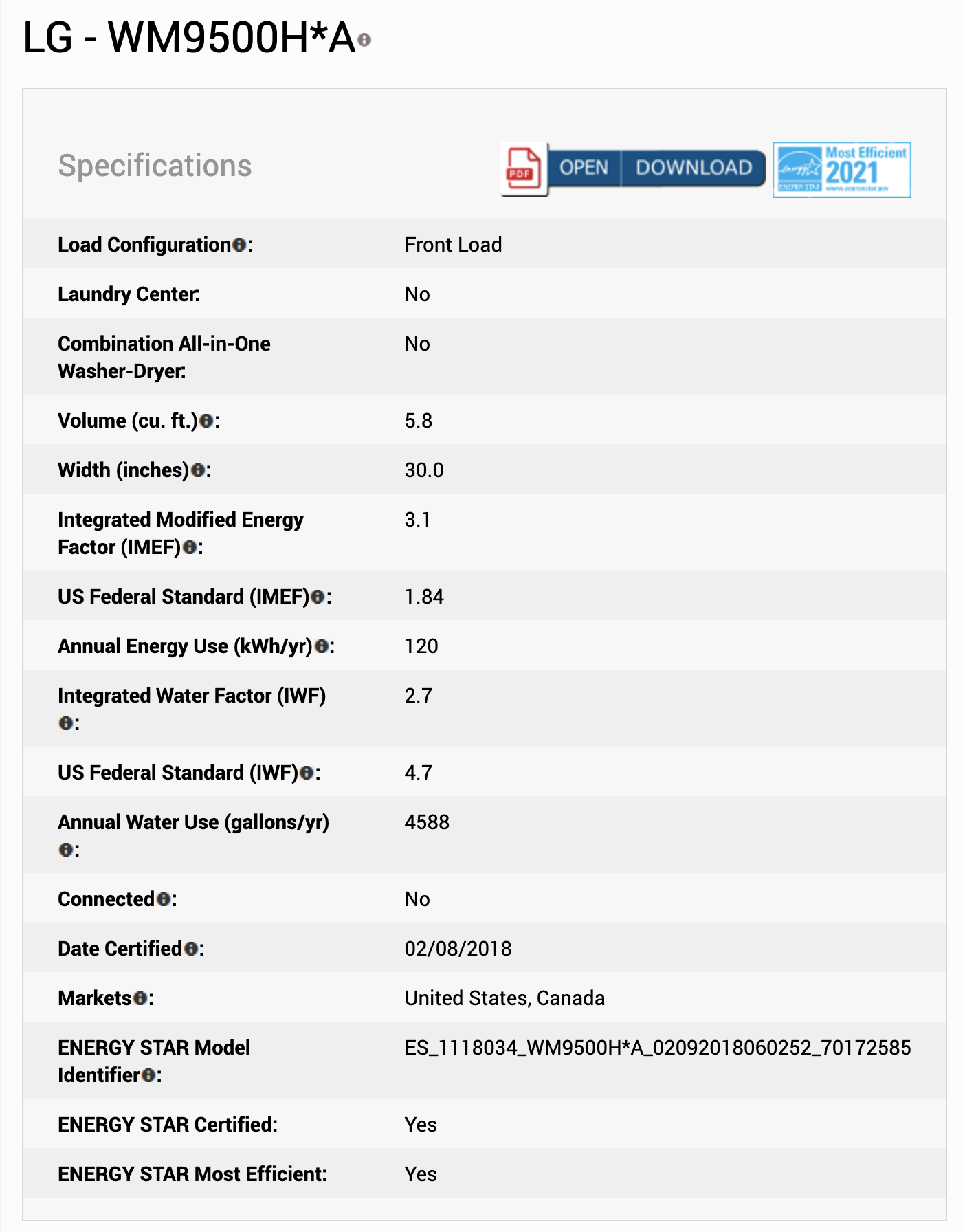Fall is one of the best times to get deals on appliances as next year’s models start to show up in retail stores. If you’ve been thinking about upgrading a washing machine or dishwasher, now’s the time to take advantage of sales on previous year’s models. In addition to initial product cost, consider two other factors: the appliance’s efficiency and its carbon emissions.
Your choices can reduce carbon emissions
While a single wash load of laundry is a minor contributor to carbon emissions, our collective buying decisions make an enormous impact on climate change. Residential energy use accounts for roughly 20% of greenhouse gas (GHG) emissions in the United States, and appliances that use heat and hot water are significant contributors to those emissions. So one of the most effective ways you can reduce carbon emissions is to choose appliances wisely.
Since household appliances can last 10-20 years, your decision today will have lasting impacts on your home’s carbon emissions. Think long term. Stop choosing appliances powered by natural gas or propane, and switch to the most energy efficient electrical appliances you can afford. As the utility grid moves to cleaner energy like wind and solar in the coming years, your home’s carbon footprint will shrink.
Evaluate efficiency
When buying appliances, there are two rating systems you can rely on to evaluate efficiency: CEE ratings and the ENERGY STAR designation. Both systems rank appliances on water and energy efficiency but take slightly different approaches.
ENERGY STAR appliances can save you 30% on energy bills compared to an average appliance. To save even more, look for the “Most Efficient” category, which includes products that are up to 44% more efficient than standard products.
CEE is a consortium of U.S. and Canadian utilities who set standards that encourage manufacturers to develop super efficient appliances. The CEE rating system has standards for a wide variety of household systems and appliances, including dishwashers, refrigerators, room air conditioners, clothes washers and clothes dryers. The Tier 1 ranking is equivalent to basic ENERGY STAR rated appliances. Ratings climb to Tier 2, 3 and Advanced Tier, each of which is more efficient than the previous one. The Advanced Tier is typically equivalent to the Most Efficient ENERGY STAR designation. You can search the CEE library to find out how various models compare on CEE ratings and both energy and water use.
Once you find an appliance model that interests you, check the manufacturer’s product specifications. You’ll find the ENERGY STAR and CEE ratings as well as the factors that determine each appliance category’s efficiency. For instance, for clothes washers, efficiency is based on two numbers: the MEF (Modified Energy Factor) and WF (Water Factor). The MEF tells you how much dryer energy it will take to remove moisture content in your laundry at the end of the final spin cycle, as well as the energy required to run the washer and heat the water. A higher MEF means a more efficient clothes washer.
The WF indicates the number of gallons of water per cubic foot the washer uses, meaning that a lower WF makes for a more efficient washing machine. To qualify for ENERGY STAR currently, clothes washers must have a minimum MEF of 2.0 and a maximum water factor of 6.0.
Table: Efficiency rankings for clothes washers

Dishwashers
ENERGY STAR certified dishwashers are 12% more energy efficient and 30% more water efficient than standard models. All 2021 standard size dishwashers were rated CEE tier 1 with energy use ranging from a high of 270 to a low of 199 kWh/year on the CEE list. You can find a list of dishwasher models and their CEE specifications.
Refrigerators
Both ENERGY STAR and CEE rated refrigerators use less electricity than standard models because of features such as high-efficiency compressors, improved insulation, and better defrost mechanisms. To be considered for CEE ratings, refrigerators must be at least 10% more efficient than the standard. You can find a list of refrigerator models and their CEE specifications here.
Clothes Dryers
The efficiency of a clothes dryer is measured by its CEF or Combined Energy Factor. The higher the CEF number, the more efficient the dryer is. The CEF for clothes dryers must be greater than or equal to 3.93 to qualify for CEE tier 1. Ventless heat pump dryers use half the energy of standard dryers, and several 2021 models rank as Tier 2 or Advanced Tier. Check out a full list of CEE qualifying clothes dryers here.
Room Air Conditioners
The efficiency of room air conditioners is based on CEER (Combined Energy Efficiency Ratio), which is the ratio of the cooling capacity to the power input. A higher CEER indicates a more efficient air conditioner. Choose window air conditioners that are ENERGY STAR rated or invest in a ductless mini-split that, while more expensive initially, is far more efficient and can save you money over time.
Using ENERGY STAR Ratings
ENERGY STAR ratings give consumers an easy way to find energy efficient appliances. To make an evaluation, start at the ENERGY STAR site and use the product finder to search based on price, brand, size and other factors.

To further analyze a specific appliance, choose “click for product details.” You’ll be able to see the ENERGY STAR ranking for the product, as well its specifications. Be sure to check the appliance-specific ratings to decide which is most efficient.

You can also compare the specifications for a few models side by side to see which product is best for your needs.

Utility rebates
Depending on where you live, your utility may provide rebates on major appliances if they are more efficient than your current model. For instance, National Grid will give Rhode Island and Massachusetts residents a $50 rebate when they upgrade from a standard clothes dryer to an ENERGY STAR model, but does not offer the same rebate to New York residents. Start at the ENERGY STAR website or check your utility’s web site to see what rebates they offer before you buy an appliance, and be prepared to share information about your old appliance as well as the new one when you apply for a rebate.
Uzoma Adichie contributed research and writing to this blog. This summer Zuzu worked as a Sense intern through a program funded by The Massachusetts Clean Energy Center (MassCEC). She is an undergraduate at New York University.
